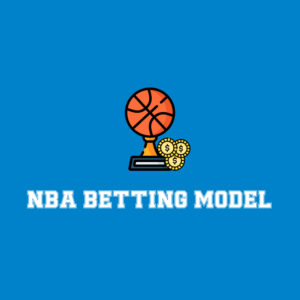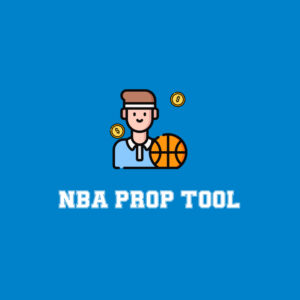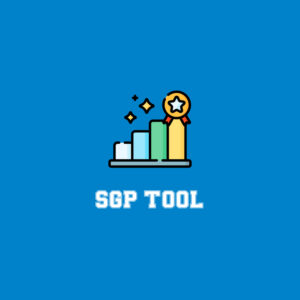
There are many potential drops this week as fantasy managers prioritize categories and standings points in a late push for fantasy glory. A sizable percentage of potential drops fit into a similar class, and one that is worthy of general discussion.
As you will see, many potential drops are strong players who are on the IL but are expected to return sometime this season. Such players present a conundrum for managers – we want the healthy versions of these players in our starting lineups, but right now they are hurt and clogging up precious roster spots. Here are some of the factors to consider when evaluating whether to hold or drop such players:
- Initially, how good is the player? I tend to think of players as falling into one of three buckets: (1) elite players; (2) strong players; and (3) marginal players. I tend to prioritize holding elite players expected back in the next two weeks, such that I’m confident that I will start them for at least a full week, if not longer. At the other end of the spectrum, unless a marginal player is due back this week, such that I could start them for at least two weeks, I’m likely to drop them. I want roster flexibility down the stretch and would much rather utilize my limited stashes on elite or strong players. With respect to players who fall into that middle bucket, I find the hold versus drop decision is especially league- and team-dependent. If a player is coming back soon and is strong in the categories that I’m prioritizing, I will try to hold him where possible. If there’s uncertainty regarding the player’s return date and/or ability to help me in the standings, he’s a drop.
- How certain is the player’s return date? There are three weeks left in the season. If I’m going to stash an injured player at this stage, I want to be damn sure he’s eventually going to help me. Thus, in prioritizing stashes, I will give the nod to a player I’m reasonably certain will be back soon over a potentially better player who “may” return in the next few weeks. When considering potential drops for tonight’s FAAB runs, fantasy managers should be checking the latest news on injured players and evaluating not only when those players are expected back, but also the “firmness” of their projected return dates. Are hitters performing baseball activities? Are pitchers actively throwing and ramping back up?
- How regularly is the player likely to perform when activated? In this respect, the analysis is different for hitters and pitchers and also can be impacted on where the player’s team sits in the playoff race. For hitters, is he an everyday player when healthy? Is his team in contention such that the player likely will start all or virtually all games when he returns to action? For pitchers, fantasy managers also should consider how much time they have missed and whether the player in question, if a starter, is fully built up. For instance, a starting pitcher who did not miss much time or who pitched in multiple rehab starts probably is capable of going five innings and qualifying for a win, whereas a pitcher who has missed a lot of time and is hurrying back likely will be on a limited pitch count. A team still fighting for a playoff spot is more likely to allow a returning starter to pitch deeper into games than a team that’s already out of contention. Try to identify and stay away from pitchers (i) whose teams have been eliminated from playoff contention, and (ii) who may be focused on simply getting some innings in before the end of the season.
- How likely is the injury/IL stint to impact the player’s performance when he returns? This type of evaluation can be very challenging. Some examples of situations I would be concerned about are: (1) pitchers returning from forearm, elbow, or shoulder injuries – starting them seems riskier than pitchers coming back from a leg injury; (2) power hitters returning from wrist injuries – such injuries often can zap power; (3) speedsters returning from lower leg injuries – check to see if such players stole bases during any rehab assignment; and (4) all hitters who missed meaningful time and skipped rehab starts – it often takes a bunch of plate appearances for hitters to get their timing back (recall hitters’ early struggles in seasons with abbreviated spring trainings). While I think factors such as these are worth considering, due to plenty of uncertainties, I would not treat them as determinative in isolation. That noted, throughout this season, we have seen injured players struggle for some period of time following activation. Holding or acquiring such players sometimes is worthwhile, even with a ramp-up back to peak performance levels. However, with only three weeks left in the season, the likelihood that an injured player may not return at his peak is an important consideration.
Some of the players who should at least be considered as potential drops this week are set forth below in the following two tables – the first includes hitters and the second includes pitchers. In addition to the player’s name, team and position, the tables include the player’s ownership percentage in the premier 15- and 12-team contests: the NFBC’s Main Event and Online Championship, respectively. Finally, the tables list my rankings as to how strongly – or not – I feel each particular player should be dropped in those 15-team and 12-team formats, respectively. The key to these rankings, from 0-4, is as follows:
- 0 = Do not drop
- 1 = Team context dependent; probably should not be dropped on most teams
- 2 = Team context dependent; compelling arguments to drop and not drop
- 3 = Team context dependent; probably should be dropped on most teams
- 4 = Drop
Potential Hitter Drops
| Name | Team | Position | Roster% (15tm) | 15tm Drop? | Roster% (12tm) | 12tm Drop? |
| Ryan Mountcastle | BAL | 1B | 90% | 3 | 83% | 4 |
| Josh Bell | ARI | 1B | 95% | 3 | 96% | 4 |
| Jasson Dominguez | NYY | OF | 91% | 3.5 | 42% | 4 |
| Coby Mayo | BAL | 3B | 53% | 3.5 | 12% | 4 |
| Lourdes Gurriel Jr. | ARI | OF | 100% | 1 | 96% | 1.5 |
| Max Kepler | MIN | OF | 74% | 4 | 44% | 4 |
| Corey Seager | LAD | SS | 100% | 3 | 100% | 3.5 |
| Byron Buxton | MIN | OF | 97% | 3.5 | 93% | 4 |
| Carlos Correa | MIN | SS | 86% | 3.5 | 79% | 4 |
| Bo Bichette | TOR | SS | 77% | 2 | 56% | 3 |
| Jeimer Candelario | CIN | 1B/3B | 42% | 3.5 | 47% | 4 |
| Austin Hays | PHI | OF | 61% | 3 | 7% | 4 |
| Alec Bohm | PHI | 1B/3B | 100% | 1.5 | 100% | 2.5 |
| Teoscar Hernandez | LAD | OF | 100% | 0 | 100% | 0.5 |
| Jeff McNeil | NYM | 2B/OF | 100% | 4 | 71% | 4 |
The Rangers placed Corey Seager on the 10-day IL with hip soreness. He previously had missed several games due to his hip bothering him. It currently is unclear whether Seager will play again this season. With the Rangers out of playoff contention, there is no reason for Seager to return this season, and he might not. On the other hand, a minimum IL stint would still leave about two weeks of potential stats from an excellent hitter. Fantasy managers rostering Seager should review the news coming out of Texas today regarding Seager. Absent favorable news, I view Seager as a drop except for teams with a “free” roster spot. While Seager’s skills are appealing, the uncertain recovery timeline, coupled with the fact that the Rangers are out of playoff contention, makes it more likely than not that Seager is done for the season. If needing to prioritize potential drops, managers almost always would be better served rostering a player who can help them now, or very soon, over a player unlikely to return or whose playing time – if activated – is likely to be limited.
In making stash/drop decisions, sometimes team or manager tendencies need to be considered. Coby Mayo is one of the top prospects in baseball. In 87 games in Triple-A this season, Mayo had 22 HR, 61 R, 67 RBI and 4 SB, while hitting .293. After a very short but unsuccessful callup, the Orioles shuttled Mayo back to Triple-A. On September 1, however, the Orioles recalled Mayo when rosters expanded and, very shortly thereafter, starting third baseman Ramon Urias was injured, seemingly opening up regular playing time for Mayo. Many fantasy managers, including myself, promptly dove back in on Mayo, only to discover, to our collective chagrin, that Mayo would only receive very limited playing time. Candidly, it did not even occur to me that the Orioles would play journeyman Emmanuel Rivera over Mayo. While Mayo probably would have been given a nice, long leash on most other teams under similar circumstances, my mistake was not analyzing his team context sufficiently. The Orioles have demonstrated throughout this season that rookies would be given a very short leash unless hitting immediately. The team demoted MLB’s top prospect, Jackson Holliday, very early in the season when Holliday struggled coming out of the gate and did the same with Mayo in his first callup. Baltimore also applied quick hooks to Connor Norby and Kyle Stowers – both of whom were traded to Miami – as well as Heston Kjerstad. Thus, while Mayo could have raked immediately and potentially earned additional playing time, the team puts rookies on short leashes and (reasonably) is focused more on winning games in the here and now than player development considerations. Given Mayo’s limited role – which he has very little time remaining to expand (especially with Urias recovering and expected back soon) – he is a drop in all formats.
The Yankees are in a tight battle with the Orioles for dominance in the AL East. In anticipation of September 1 callups, (seemingly) savvy fantasy managers snatched up New York’s elite prospect, Jasson Dominguez. After all, current left fielder Alex Verdugo has been terrible, and lengthening the Yankees’ lineup would be hugely beneficial. Unfortunately, unbeknownst to most of us, Verdugo has “the goods” on Brian Cashman and/or Aaron Boone and, consequently, rather than promoting Dominguez, the Yankees decided the team somehow would be better served calling up 26-year-old journeyman Duke Ellis – who spent most of this season hitting .212 for Seattle’s Triple-A team – than one of the top prospects in all of baseball. (Disclaimer: I have no actual proof that Verdugo is blackmailing the Yankees’ brass, but, as Sherlock Holmes once observed: “When you have eliminated all which is impossible, then whatever remains, however improbable, must be the truth.”) So, is Dominguez now a drop? In the context of 12-team leagues and virtually all 15-team leagues, the answer is yes. The Yankees have shown their hand and, even if Dominguez gets a mid-month callup, there is a real risk that his playing time will be limited. Of course, an injury to any of Judge, Soto, Stanton or Verdugo likely would mean an immediate promotion and full-time role for Dominguez, but I dislike stashing a player whose value is dependent upon an injury to another player, especially with so little time left in the season.
Alec Bohm was placed on the IL this week with a left-hand strain he suffered on August 29. The IL stint was backdated to September 3, meaning he is eligible to be activated by the end of this week. Notably, however, recent news indicates that Bohm can perform all baseball activities except swinging, which seems pretty important. Fantasy managers have a tough call with Bohm. He’s having a solid season (13 HR, 59 R, 89 RBI, 5 SB, .290 AVG) and would be worth stashing in most circumstances if missing this week but active for the final two weeks of the season. Stashing Bohm based on that expectation could be risky because there is no guarantee he will be ready to play in time for the penultimate week of the season (and, if activated, whether he will play at peak performance given that he’s unable to swing a bat right now). Some factors to be considered include, but are not limited to, the importance of RBI and AVG – Bohm’s best two categories – in the standings, as well as the availability of a roster spot to stash Bohm, how he compares with other potential stashes and the quality of the substitute that can be started in his place. Bohm strikes me as a very league- and team-dependent decision in terms of holding versus dropping.
Carlos Correa was placed on the IL on July 20 (retroactive to July 16) with plantar fasciitis. At the time, the injury was not considered to be serious. The news out of Minnesota on August 3 was that Correa was approaching a rehab assignment. That never happened. It still hasn’t happened. Having missed almost two months and counting, Correa likely will need to play in rehab games before returning, but there is no news that such activity is imminent. At this point, if Correa is going to return this season, it likely will be on a limited basis with the Twins focusing on giving him plenty of rest and ramping him up for the playoffs. The fact that Correa arguably should have been dropped many weeks ago and was held by most fantasy owners does not mean that continuing to stash him is the optimal strategy. Sometimes, it’s best to cut losses.
Quick Hits
- On Friday, Jeff McNeil was hit by a 74-mph curveball that he said: “Didn’t hurt that bad at all.” Yesterday, however, it was announced that the pitch fractured McNeil’s wrist and, with a 4–6-week recovery period, effectively ended his season. McNeil should be dropped tonight in all formats.
- On Thursday, the Twins placed Max Kepler on the 10-day IL with knee tendinitis. Kepler, whose knee has been bothering him for quite some time, is in the midst of a disappointing season. Kepler has played in only 105 games and has 8 HR, 43 R, 42 RBI and 1 SB with a .254 AVG. While it is possible that Kepler returns to action this week (he is eligible to come off the IL on September 13), there is no guarantee he will do so, and this is not a skill set that is worth stashing this late in the season. Kepler is a drop in 12- and 15-team formats.
- Teoscar Hernandez was hit on the foot by a pitch Friday night and immediately departed. After the game, Dodgers manager Dave Roberts responded as follows when asked how Hernandez was feeling: “Not great. He’s as tough as they come and could barely move his foot, so I don’t see how it’s not gonna be an IL, but I’m sure we’re going to give it a couple of days to see how he comes out.” This is Example No. 5,342,859 as to why “manager speak” should be taken with a big grain of salt. Since that statement, X-rays, an MRI and a CT scan all came back negative, and now Hernandez is expected to avoid an IL stint and possibly be back early in the week. When dealing with very good players, it often makes sense to hold an injured player where there’s uncertainty as to the extent of the injury and/or the projected recovery timeline until more information becomes available. Hernandez is having a very strong season – through 138 games, he has 28 HR, 73 R, 87 RBI, 10 SB and a .266 AVG. Based on the information available at the time of this writing, Hernandez is a hold and should not be dropped.
- Reds infielder Jeimer Candelario went on the IL on August 20 with a fractured big toe. Recent reports indicate that due to lingering discomfort, Candelario remains limited to rehab activities and has yet to resume baseball activities. At this point, it is unclear whether Candelario will return this season and, even if he is able to do so, such a return does not appear imminent. Candelario is not a difference-maker and seems unworthy of an extended stash this late in the season; he should be dropped for an active player.
- Austin Hays went on the IL, retroactive to September 2, with a kidney infection. There seemingly is a good chance that Hays will be activated when eligible, which means he should be available for the upcoming Friday through Sunday scoring period. If Hays is one of a fantasy manager’s top six outfielders in a 15-team league – and better than the alternatives available in FAAB – he could be worth holding. On the other hand, if an active bat is needed for the Monday through Thursday scoring period, there is news suggesting Hays may not be back this Friday, and/or there are better options in FAAB, Hays can be safely dropped (which almost certainly is the case in 12-team leagues).
- Josh Bell’s role with the Diamondbacks appears in flux now that Christian Walker has returned. After starting virtually every game since being acquired by Arizona, Bell has ridden the pine the last two games. Playing time also may be impacted when Lourdes Gurriel Jr. is activated off of the IL. While things could change, right now Bell is in a part-time role, and fantasy managers do not have the luxury of waiting for Bell to earn additional playing time. Bell is a drop in 12-team leagues and also 15-team leagues where a decent corner infield with a full-time role can be swapped in for Bell.
- Ryan Mountcastle went on the IL on August 26 with a sprained wrist. Thus far, his recovery has been slow. There is no timetable for Mountcastle’s return and he only recently began hitting off of a tee. While a solid bat, Mountcastle is far from elite and is not worth stashing for 1-2 weeks in the hopes of getting a week’s worth of at bats from him.
- Byron Buxton suffered a setback this week in his rehab. On the IL since August 15 with what was supposed to be a minor injury, Buxton continues to experience soreness in his right hip and now will need to be evaluated again. Buxton has had a strong season when healthy but, of course, health is always a problem for him. With three weeks left in the season, “setback” should be treated as a code for “drop ASAP.”
Potential Pitcher Drops
| Name | Team | Position | Roster% (15tm) | 15tm Drop? | Roster% (12tm) | 12tm Drop? |
| Tyler Mahle | TEX | SP | 19% | 4 | 12% | 4 |
| Garrett Crochet | CWS | SP | 79% | 4 | 87% | 4 |
| Justin Steele | CHC | SP | 100% | 3.5 | 100% | 4 |
| Jon Gray | TEX | SP | 83% | 4 | 36% | 4 |
| Tyler Glasnow | LAD | SP | 93% | 2 | 83% | 2 |
| Grayson Rodriguez | BAL | SP | 90% | 3.5 | 73% | 4 |
| Michael Lorenzen | KC | SP | 60% | 4 | 41% | 4 |
| Taj Bradley | TB | SP | 98% | 1.5 | 90% | 2.5 |
| Andrew Abbott | CIN | SP | 68% | 2.5 | 72% | 3.5 |
| Jordan Montgomery | ARI | SP/RP | 49% | 4 | 60% | 4 |
| Clayton Kershaw | LAD | SP | 39% | 3.5 | 38% | 4 |
| Reese Olson | DET | SP | 35% | 2.5 | 31% | 3.5 |
| Clay Holmes | NYY | RP | 100% | 1 | 100% | 1.5 |
| Gavin Stone | LAD | SP | 100% | 3.5 | 98% | 4 |
| Kyle Harrison | SF | SP | 97% | 4 | 96% | 4 |
| Max Meyer | MIA | SP | 98% | 4 | 70% | 4 |
On Wednesday, the Cubs placed Justin Steele on the IL with elbow inflammation. The Cubs are hopeful that the injury is minor and that Steele will only miss the minimum 15 days. If Steele returns, it is possible he could make as many as two starts, but there is a real risk that he’s done for the season. The key determining factor likely will be whether the Cubs still are alive for a playoff spot or have been eliminated from contention. If the Cubs are eliminated, there seemingly would be no compelling reason to risk further damage by letting Steele pitch again. Given the Cubs’ current, weak position in the wild-card race, there’s a good chance that Steele is done for the season. Steele seems like a drop for the vast majority of teams, with the possible exception of those that have a free roster slot and would rather hold an above-average starter with a small likelihood of pitching again than using it for a healthy but lesser player.
Garrett Crochet has had an amazing season. Even with some recent struggles in limited outings, he has compiled 193 strikeouts in only 134 innings and strong ratios (3.83 ERA, 1.10 WHIP). Notably, however, Crochet has not gone longer than 4 IP in any start since June 30, and that’s not changing now. Crochet is not projected for any more two-start weeks this season, assuming the White Sox even let him continue pitching. Crochet already has thrown more innings this season than in his prior MLB and MiLB stints combined. Because Crochet will not be allowed to pitch 5 IP in a start, he has no chance to accumulate any wins for fantasy managers. With only one abbreviated start per week remaining, Crochet’s ability to rack up strikeouts is also limited. Some managers may feel that winless starts from Crochet still have some value; after all, 4 IP with a bunch of strikeouts and strong ratios can be very helpful for fantasy. But are those strong ratios guaranteed? No. Crochet is gassed and, consequently, his performance has declined. In his last nine starts, totaling 26.2 IP, Crochet has allowed 21 ER (7.09 ERA). For those managers still rostering Crochet, it’s time to thank him for services rendered and move on.
Tyler Glasnow threw a bullpen session yesterday that, by all accounts, went fine and was pain-free. Recovering from right elbow tendinitis, this is a good sign for Dodger fans hoping to see Glasnow in the postseason. For fantasy managers focused on the regular season, the news is less favorable. Glasnow threw between 15 and 25 pitches yesterday and they all were fastballs. Another bullpen session is on tap soon, probably on Tuesday, when Glasnow will be expected to utilize his entire pitch mix. According to Dodgers manager Dave Roberts, the next step would be a simulated game, presumably sometime later this week. Roberts previously had indicated that Glasnow would need to make at least one rehab start before returning to action. Roberts acknowledged that having Glasnow fully ramped up prior to the postseason will be a challenge: “Just looking at the calendar, there’s only a few opportunities, so we might be in that situation where it’s only three or four innings.” Thus, assuming Glasnow is able to avoid any setbacks, a best-case scenario might be two innings-limited starts, wherein Glasnow pitches effectively, racking up some strikeouts and solid ratios. Is that enough to make Glasnow a hold and not a drop? That’s a league- and team-dependent call. Glasnow will not be back this week, and it sounds like next week is unlikely (even if he pitched late next week, it will be tough for managers to lock him into their starting lineups a week from tomorrow). For managers prioritizing wins, Glasnow should be dropped. Even if he makes it back, odds are he will not be able to pitch five innings and qualify for a win. Managers focusing on ratios have a tough call – just because Glasnow is one of the best pitchers in the MLB when healthy does not mean he will pitch effectively in one or two limited outings following an extended absence. For managers with solid pitching and “tight” benches, I’d lean in favor of dropping Glasnow. Managers badly in need of pitching who have the roster flexibility to continue stashing Glasnow should do so – the Dodgers will be motivated to get Glasnow back on the mound for some work prior to the playoffs, and a strong final week could be very helpful to many teams.
Yankees closer – or former closer – Clay Holmes presents an interesting decision for fantasy managers. While his season stats are not bad (2 W, 29 SV, 60 K in 57 IP, 3.27 ERA, 1.33 WHIP), Holmes has blown many save opportunities, some in spectacular fashion. Finally, manager Aaron Boone removed him from the closer role, kind of. The Yankees have indicated that they will get “creative” with the ninth inning moving forward, and that Holmes will remain in the mix for saves. On Friday, Luke Weaver – the team’s most consistent reliever this season – was given the save opportunity and converted it, recording his first MLB save. If needing saves and lacking better alternatives, I’d hold Holmes. The Yankees are painfully (and unproductively) loyal to certain players (see Verdugo, Alex), and it would not surprise me to see Holmes given future save opportunities this season. While Weaver (and others) may be pitching better than Holmes right now, it would be very “Yankees like” for the team to try to get back to Holmes for the playoffs, rather than using a less-experienced option. Thus, while I’m unsure if Holmes is a start this week (unless desperate for every possible save), I would hold him for now.
I had to check the numbers three times. To my disbelief, Jordan Montgomery still is rostered in 49% of Main Event leagues and 60% of Online Championship leagues. Folks, as a fantasy community, we need to do better. If you take nothing else from this article, please drop Montgomery tonight. After exercising extreme patience, even the Diamondbacks booted Montgomery and his $25 million contract from their starting rotation. Is there any reason to roster Montgomery as a long reliever? None, as far as I can tell. He has a well below-average strikeout rate (73 K in 105 IP), a terrible 7.1% K-BB%, and standings-crushing ratios (6.43 ERA, 1.66 WHIP). Montgomery’s own mother dropped him last week in her home league and NFBC managers should do the same tonight.
Quick Hits
- On Tuesday, the Rangers placed Jon Gray on the 15-day IL due to neuroma in his foot, and then transferred him to the 60-day IL the next day. Gray’s season is over, and he should be dropped in all formats.
- Tyler Mahle was placed on the 15-day IL on August 20 with right shoulder tightness. This past Tuesday, the Rangers indicated that Mahle was being shut down for the remainder of the 2024 season. Fantasy managers still holding Mahle should drop him tonight.
- This past Friday, the Giants placed Kyle Harrison on the 15-day IL with left shoulder inflammation. Yesterday, the team announced that Harrison would miss the remainder of the season. Thus, Harrison is a clear drop.
- The Marlins’ Max Meyer was placed on the IL yesterday – retroactive to September 4 – with right shoulder bursitis. While Meyer has not been ruled out for the season, it seems unlikely that the Marlins – who have nothing left to play for – would ramp Meyer back up for one or maybe two starts. Moreover, even if Meyer is able to return this season, do fantasy managers even want to stash a pitcher with a 5.68 ERA and 1.42 WHIP (7.20 ERA, 1.76 WHIP in the second half)? The answer should be no. Managers are encouraged to drop Meyer tonight.
- Clayton Kershaw was placed on the 15-day IL on August 31 with a bone spur in his left big toe. While Kershaw was seen playing catch shortly thereafter, he also needed a walking boot and there are no signs that he is ramping up in preparation of being activated anytime soon. Even in the seemingly-unlikely event that Kershaw is able to return this season, there are no guarantees that he will be able to pitch deep enough into games to qualify for a win, or even pitch effectively. Kershaw is not the same pitcher he once was, and thus far this season has a 4.50 ERA and 1.50 WHIP over 30 innings, with only 24 strikeouts. Fantasy managers should have better stashes available to them, even in 15-team formats.
- On Friday, Dodgers starter Gavin Stone was placed on the 15-day IL with shoulder inflammation. Although the Dodgers are hopeful that Stone will be able to return this season, his recovery diagnosis is decidedly cloudy. The plan is for Stone to be shut down for 10 days and then reevaluated. With only three weeks left in the season, players being shut down for a week and a half should be considered drops.
- Grayson Rodriguez threw 20 pitches in a bullpen session three days ago. By all accounts, the session went fine, and Rodriguez did not experience any pain. That noted, Rodriguez still needs to be built back up and, if able to return before the playoffs, it probably will be during the final week in the season, and he likely will be on a limited pitch count. In the majority of scenarios, it is difficult to justify holding Rodriguez for two weeks in the hopes of getting a productive final week out of him. In making this evaluation, it is worth noting that during the final week of the season, the Orioles are on the road facing the Yankees and the Twins – two of the better offenses in the AL. Rodriguez feels like a drop to me, although I can understand managers desperate for pitching feeling otherwise.
- Michael Lorenzen went on the IL on August 28 with a strained left hamstring. Last week, it was disclosed that Lorenzen suffered a Grade 2 strain, which typically requires a three-week recovery period. This late in the season, fantasy managers should not be stashing mediocre pitchers like Lorenzen for multi-week periods. He should be dropped.
Potential Disaster Starts
Set forth in the table below are starting pitchers I believe have real disaster potential for the coming week. In order to make this section of the column as actionable as possible, pitchers who are sparsely rostered have been excluded. Instead, I am challenging myself by focusing solely on pitchers who are at least 90% rostered in the Main Event or at least 60% rostered in the Online Championship. The pitchers are ranked from 1 to 10 for disaster potential in the coming week, with the highest numbers reflecting pitchers I am highly unlikely to start and who strike me as the biggest potential disasters.
| Pitcher | Team | Matchup #1 | Matchup # 2 | Disaster Level | Notes |
| Javier Assad | CHC | @ COL | 8.5 | High WHIP pitcher going to Coors – what could go wrong? | |
| Walker Buehler | LAD | v CHC | 6.5 | Weekly reminder that this is not the same Buehler as prior years (5.67 ERA, 1.61 WHIP) | |
| Jose Quintana | NYM | @ PHI | 7 | He’s been outpitching his peripherals, but this is a very tough matchup | |
| Cody Bradford | TEX | @ ARI | 6 | Really like the pitcher, but road start vs. MLB’s highest-scoring team is bad matchup | |
| Joey Estes | OAK | @ HOU | 8 | Has strong control and taken advantage of some good matchups; this isn’t one of them | |
| Marcus Stroman | NYY | v KC | 6.5 | Hasn’t made it to 4 IP in three of last seven starts; bad feeling about this one | |
| Brayan Bello | BOS | v BAL | @ NYY | 8 | Mediocre (but gutsy) pitcher with about as hard a week as possible in the AL |
Week 24 turned out to be a tremendous week in terms of identifying potential disaster starts. Gavin Williams pitched a gem early in the week, earning a win, but then failed to get through the first inning yesterday against the Dodgers. My selections made eight starts during the week, totaling only that one win and a combined 7.29 ERA and 1.71 WHIP. In the interests of accountability, set forth below are the results of my “disaster” picks thus far. Week 24 below reflects results through yesterday; any additional stats accumulated today will be reflected in next week’s article.
| Week | IP | H+BB | ER | Wins | Strikeouts | ERA | WHIP |
| Week 2 | 55.2 | 69 | 28 | 2 | 60 | 4.53 | 1.24 |
| Week 3 | 33.0 | 55 | 14 | 2 | 30 | 3.82 | 1.67 |
| Week 4 | 40.0 | 55 | 21 | 3 | 36 | 4.73 | 1.38 |
| Week 5 | 36.0 | 32 | 11 | 2 | 38 | 2.75 | 0.89 |
| Week 6 | 46.2 | 56 | 19 | 4 | 34 | 3.66 | 1.20 |
| Week 7 | 52.1 | 70 | 30 | 0 | 49 | 5.16 | 1.34 |
| Week 8 | 32.2 | 43 | 12 | 3 | 30 | 3.31 | 1.32 |
| Week 9 | 34.1 | 38 | 9 | 4 | 23 | 2.36 | 1.11 |
| Week 10 | 40.0 | 64 | 22 | 1 | 57 | 4.95 | 1.60 |
| Week 11 | 45.2 | 66 | 22 | 3 | 43 | 4.34 | 1.45 |
| Week 12 | 45.0 | 48 | 15 | 5 | 44 | 3.00 | 1.07 |
| Week 13 | 41.1 | 62 | 24 | 3 | 31 | 5.23 | 1.50 |
| Week 14 | 18.0 | 33 | 16 | 0 | 15 | 8.00 | 1.83 |
| Week 15 | 23.2 | 22 | 7 | 2 | 31 | 2.66 | 0.93 |
| Week 16 | 47.2 | 46 | 19 | 4 | 52 | 3.59 | 0.97 |
| Week 17 | 11.1 | 14 | 6 | 0 | 9 | 4.76 | 1.24 |
| Week 18 | 37.1 | 68 | 27 | 2 | 36 | 6.51 | 1.82 |
| Week 19 | 36.2 | 51 | 25 | 3 | 31 | 6.14 | 1.39 |
| Week 20 | 29.1 | 49 | 22 | 1 | 22 | 6.75 | 1.67 |
| Week 21 | 31.0 | 42 | 14 | 2 | 29 | 4.06 | 1.35 |
| Week 22 | 38.0 | 49 | 21 | 1 | 34 | 4.97 | 1.29 |
| Week 23 | 37.0 | 54 | 17 | 2 | 38 | 4.14 | 1.46 |
| Week 24 | 33.1 | 57 | 27 | 1 | 32 | 7.29 | 1.71 |
| Totals | 868.1 | 1165 | 439 | 51 | 814 | 4.55 | 1.34 |






























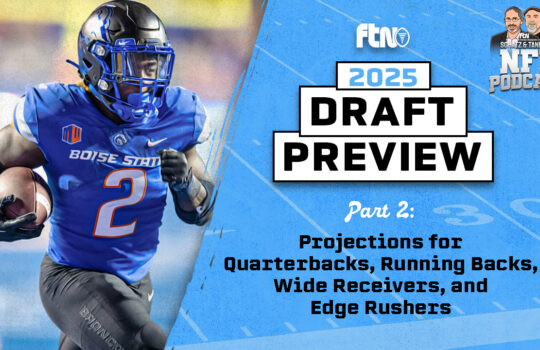

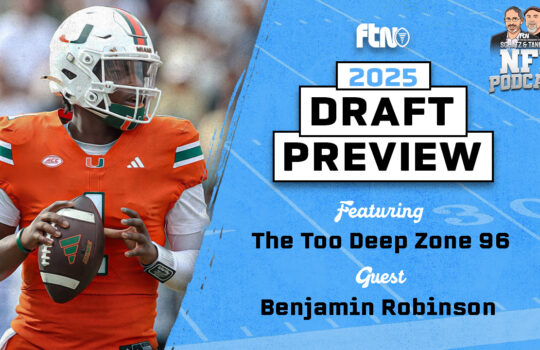








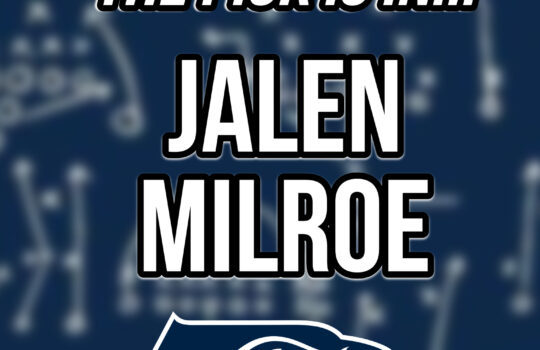

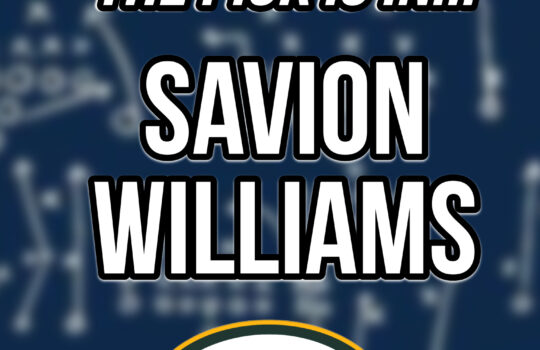
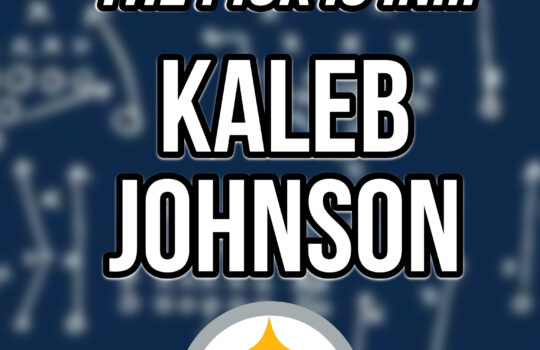

 New York Jets
New York Jets  New England Patriots
New England Patriots  Miami Dolphins
Miami Dolphins  Buffalo Bills
Buffalo Bills  Pittsburgh Steelers
Pittsburgh Steelers  Cleveland Browns
Cleveland Browns  Cincinnati Bengals
Cincinnati Bengals  Baltimore Ravens
Baltimore Ravens  Tennessee Titans
Tennessee Titans  Jacksonville Jaguars
Jacksonville Jaguars  Indianapolis Colts
Indianapolis Colts  Houston Texans
Houston Texans  Las Vegas Raiders
Las Vegas Raiders  Los Angeles Chargers
Los Angeles Chargers  Kansas City Chiefs
Kansas City Chiefs  Denver Broncos
Denver Broncos  Washington Commanders
Washington Commanders  Philadelphia Eagles
Philadelphia Eagles  New York Giants
New York Giants  Dallas Cowboys
Dallas Cowboys  Minnesota Vikings
Minnesota Vikings  Green Bay Packers
Green Bay Packers  Detroit Lions
Detroit Lions  Chicago Bears
Chicago Bears  Tampa Bay Buccaneers
Tampa Bay Buccaneers  New Orleans Saints
New Orleans Saints  Carolina Panthers
Carolina Panthers  Atlanta Falcons
Atlanta Falcons  San Francisco 49ers
San Francisco 49ers  Seattle Seahawks
Seattle Seahawks  Los Angeles Rams
Los Angeles Rams  Arizona Cardinals
Arizona Cardinals 
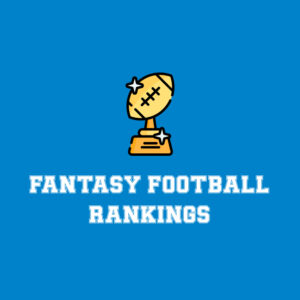
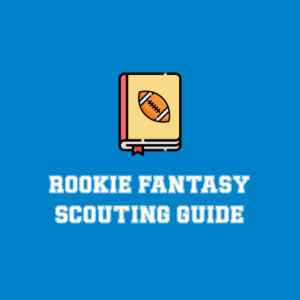
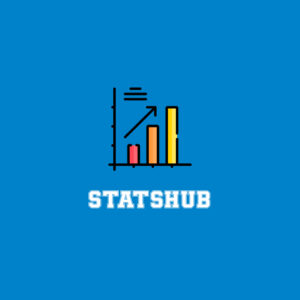



 Boston Celtics
Boston Celtics  Brooklyn Nets
Brooklyn Nets  Philadelphia 76ers
Philadelphia 76ers  New York Knicks
New York Knicks  Toronto Raptors
Toronto Raptors  Chicago Bulls
Chicago Bulls  Detroit Pistons
Detroit Pistons  Milwaukee Bucks
Milwaukee Bucks  Cleveland Cavaliers
Cleveland Cavaliers  Indiana Pacers
Indiana Pacers  Orlando Magic
Orlando Magic  Atlanta Hawks
Atlanta Hawks  Charlotte Hornets
Charlotte Hornets  Miami Heat
Miami Heat  Washington Wizards
Washington Wizards  Denver Nuggets
Denver Nuggets  Minnesota Timberwolves
Minnesota Timberwolves  Oklahoma City Thunder
Oklahoma City Thunder  Portland Trail Blazers
Portland Trail Blazers  Utah Jazz
Utah Jazz  LA Clippers
LA Clippers  Golden State Warriors
Golden State Warriors  Los Angeles Lakers
Los Angeles Lakers  Phoenix Suns
Phoenix Suns  Sacramento Kings
Sacramento Kings  Dallas Mavericks
Dallas Mavericks  Houston Rockets
Houston Rockets  Memphis Grizzlies
Memphis Grizzlies  New Orleans Pelicans
New Orleans Pelicans  San Antonio Spurs
San Antonio Spurs 

